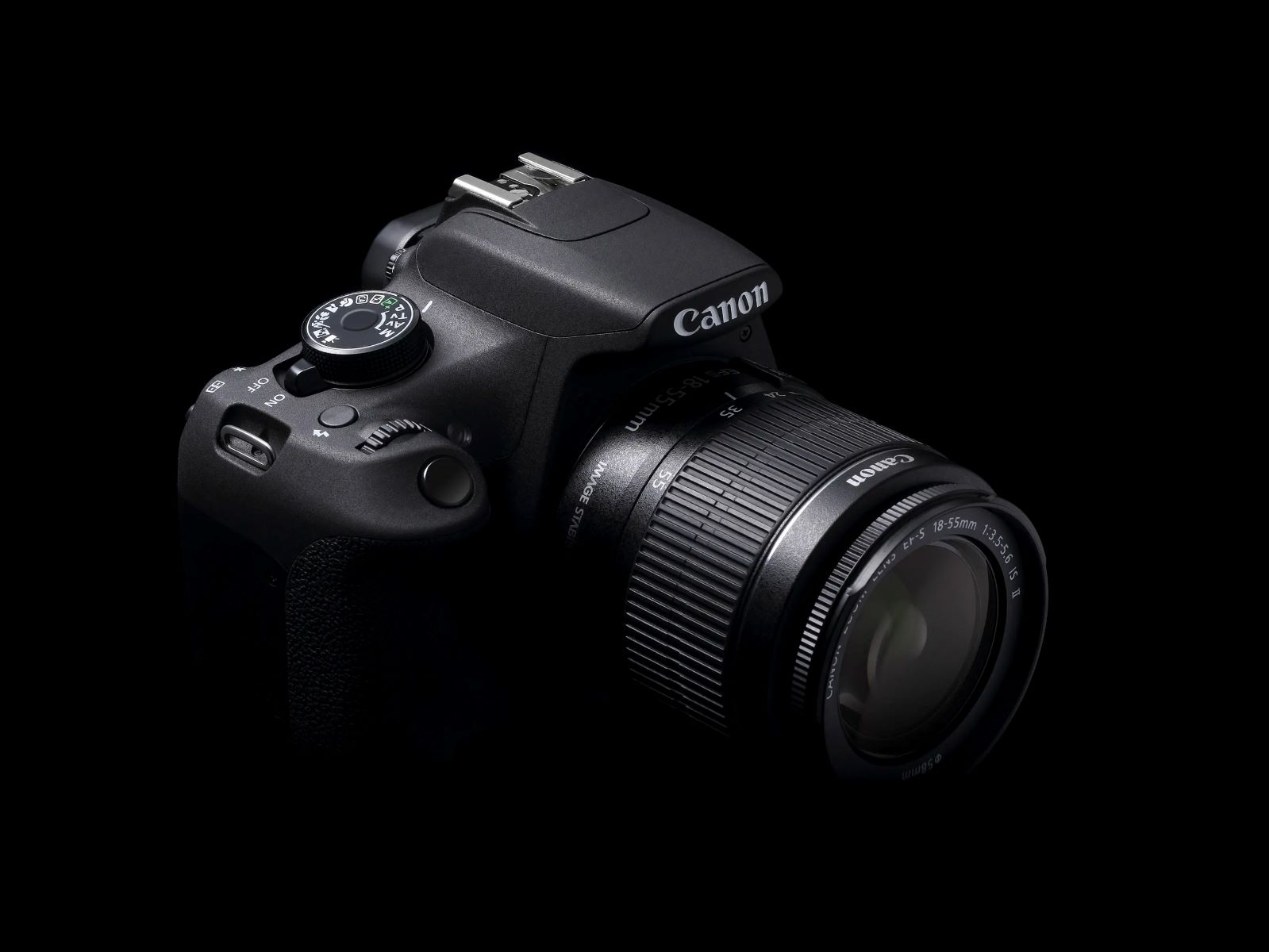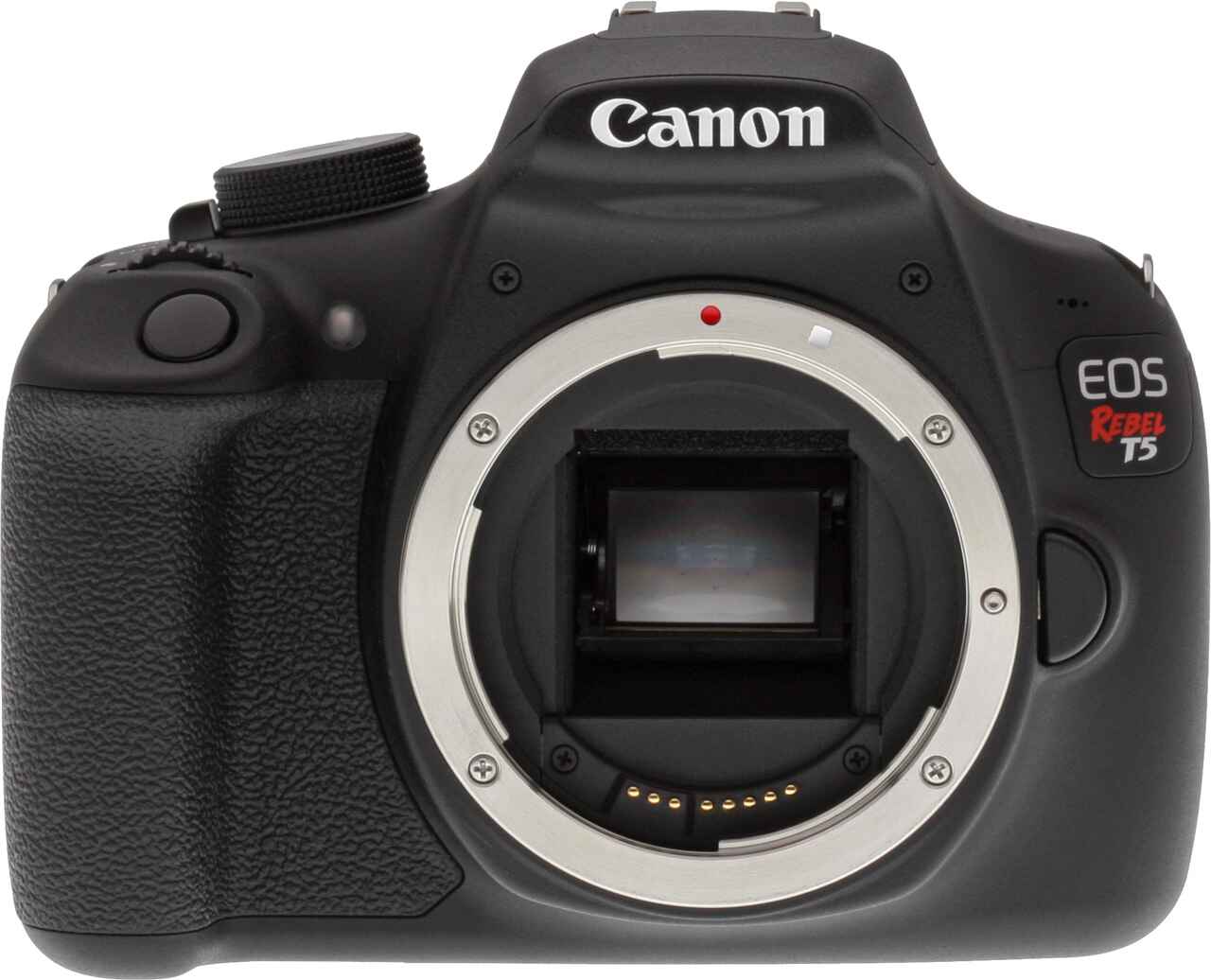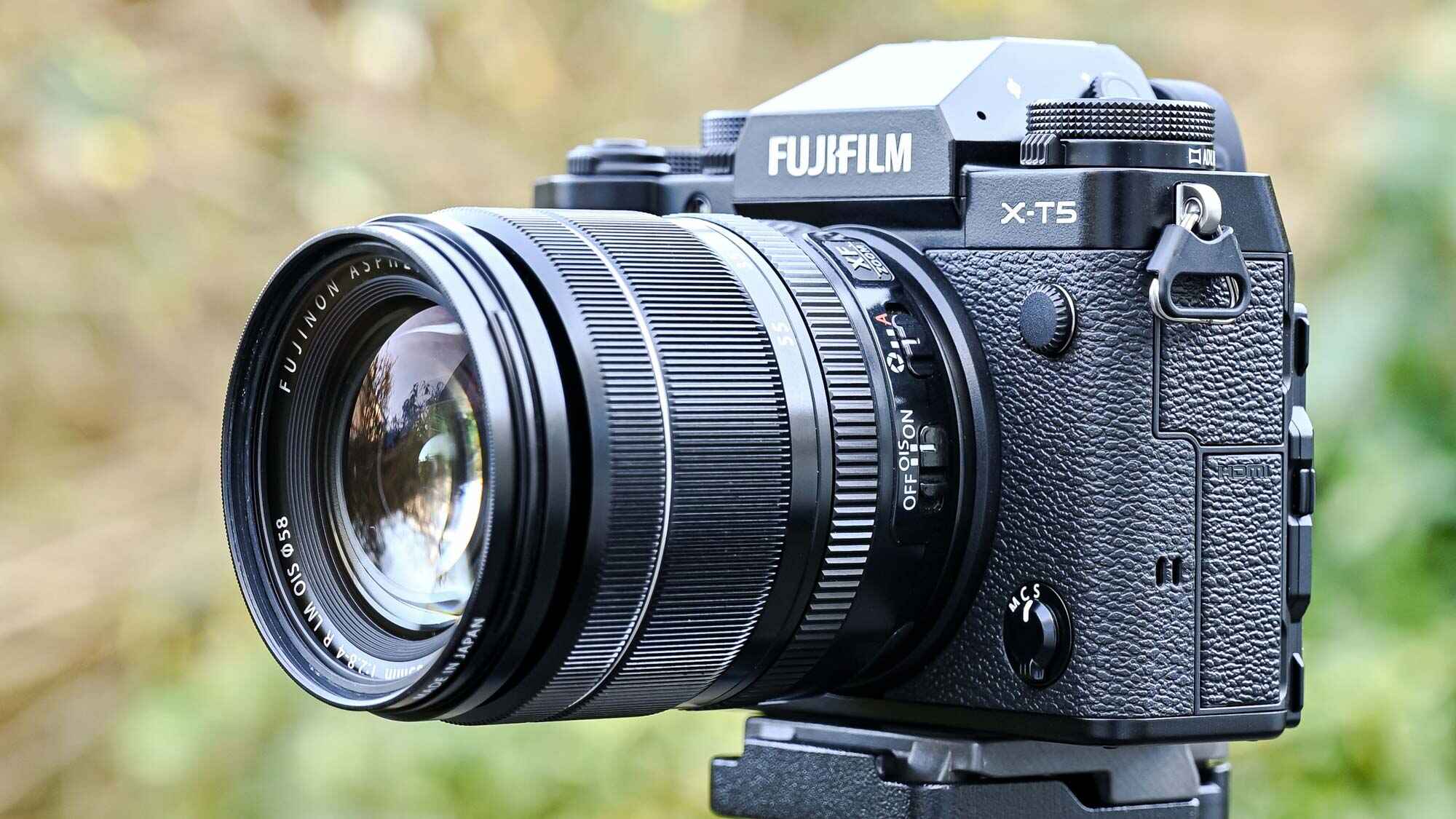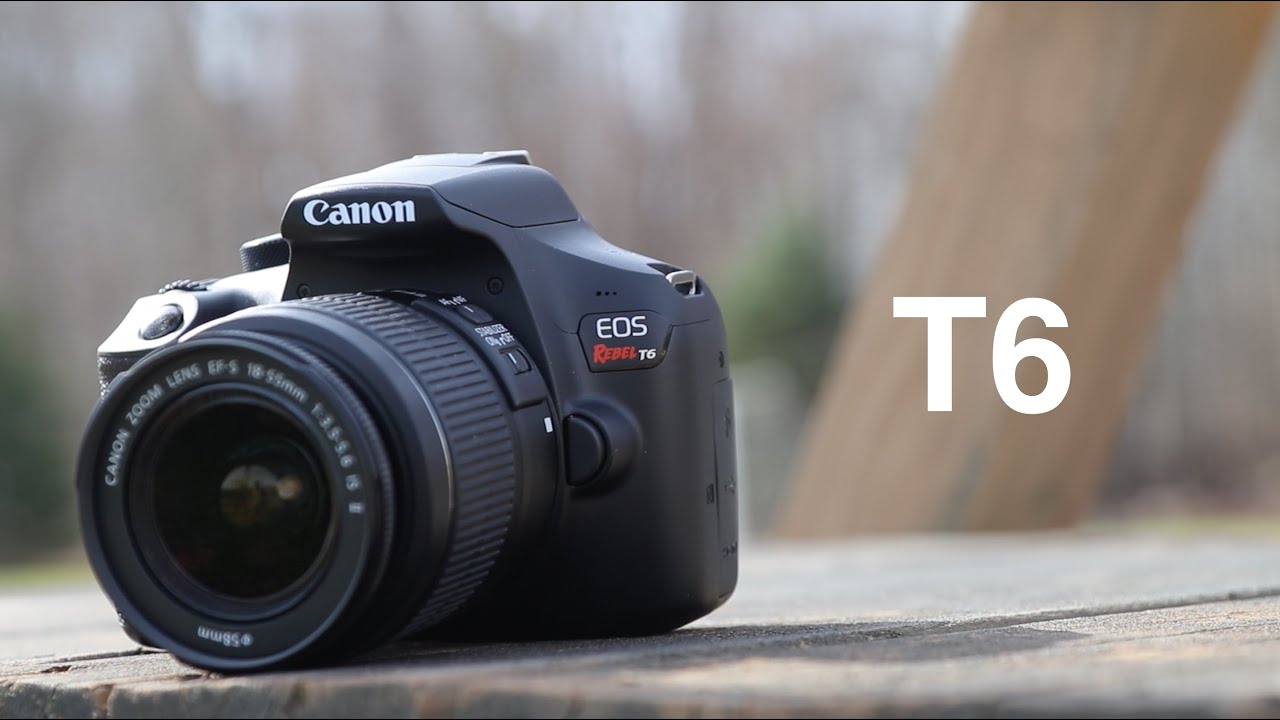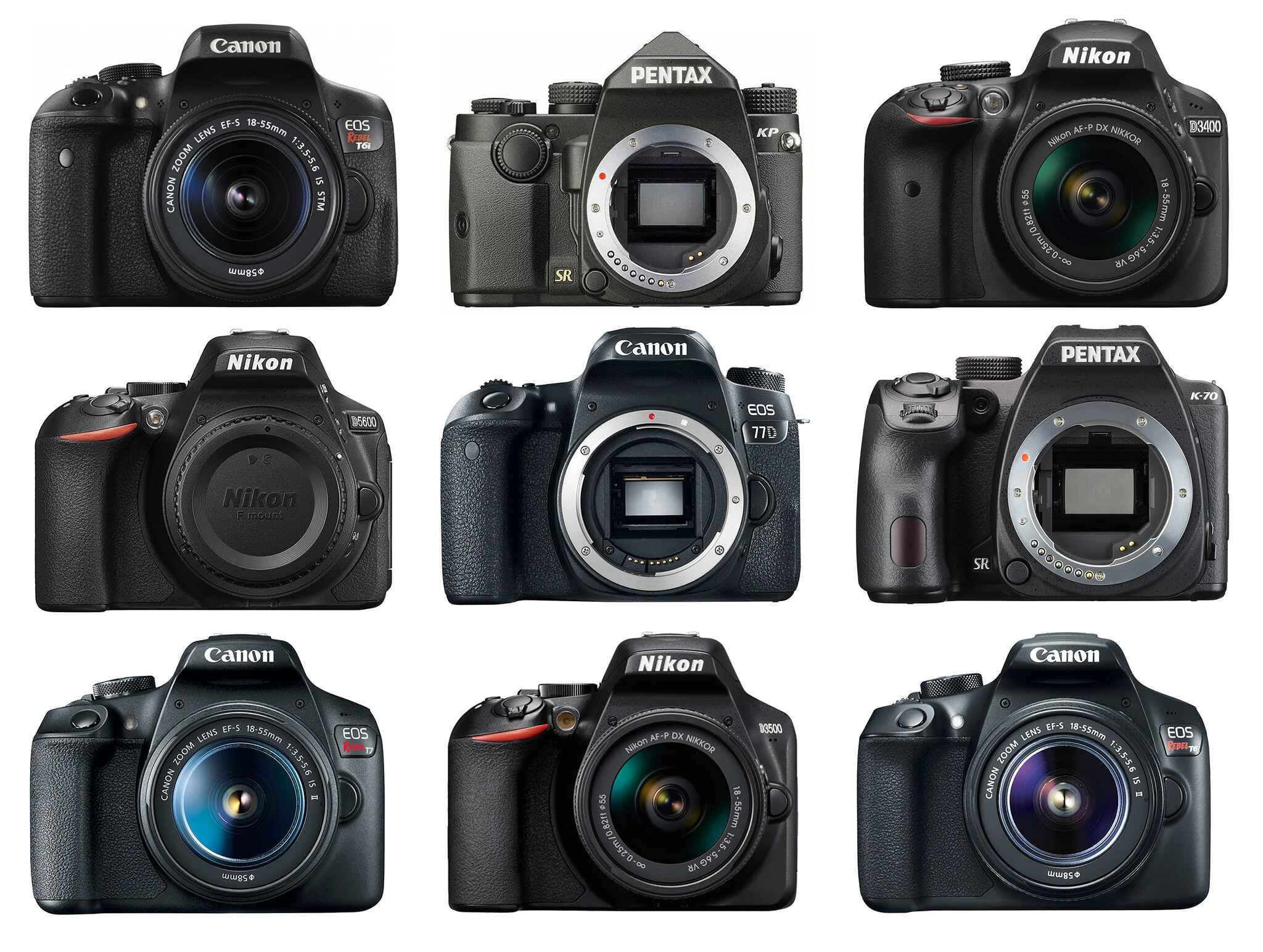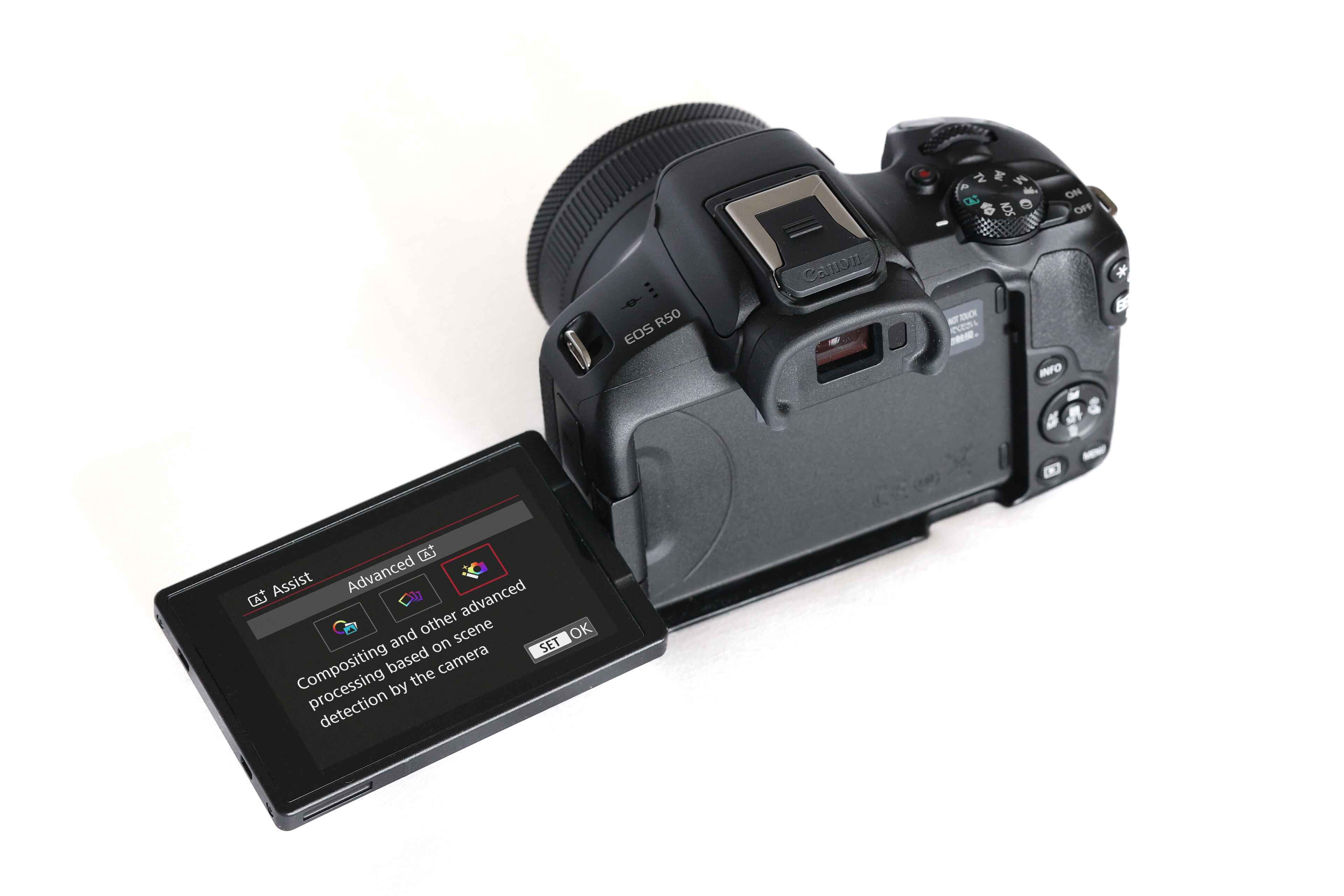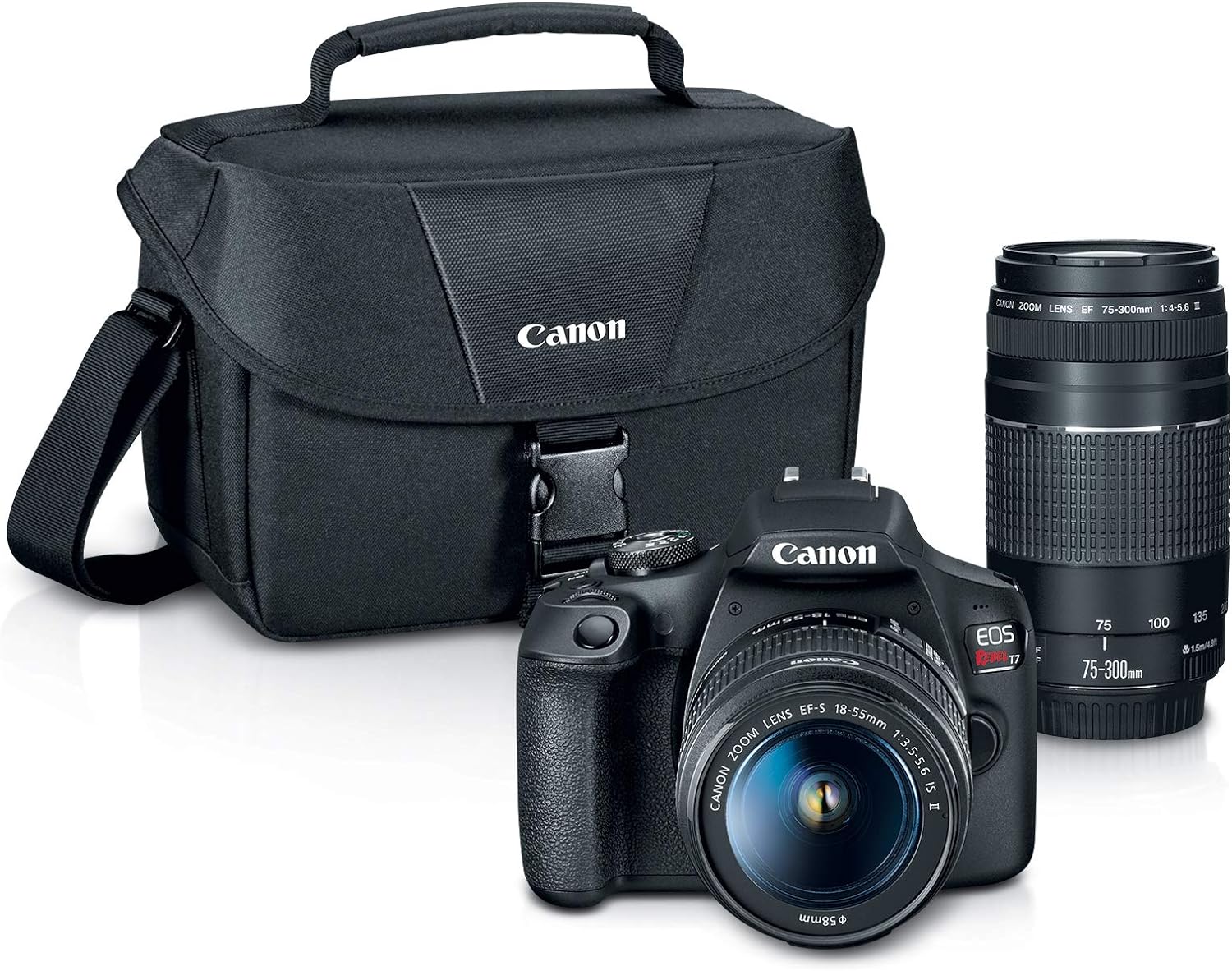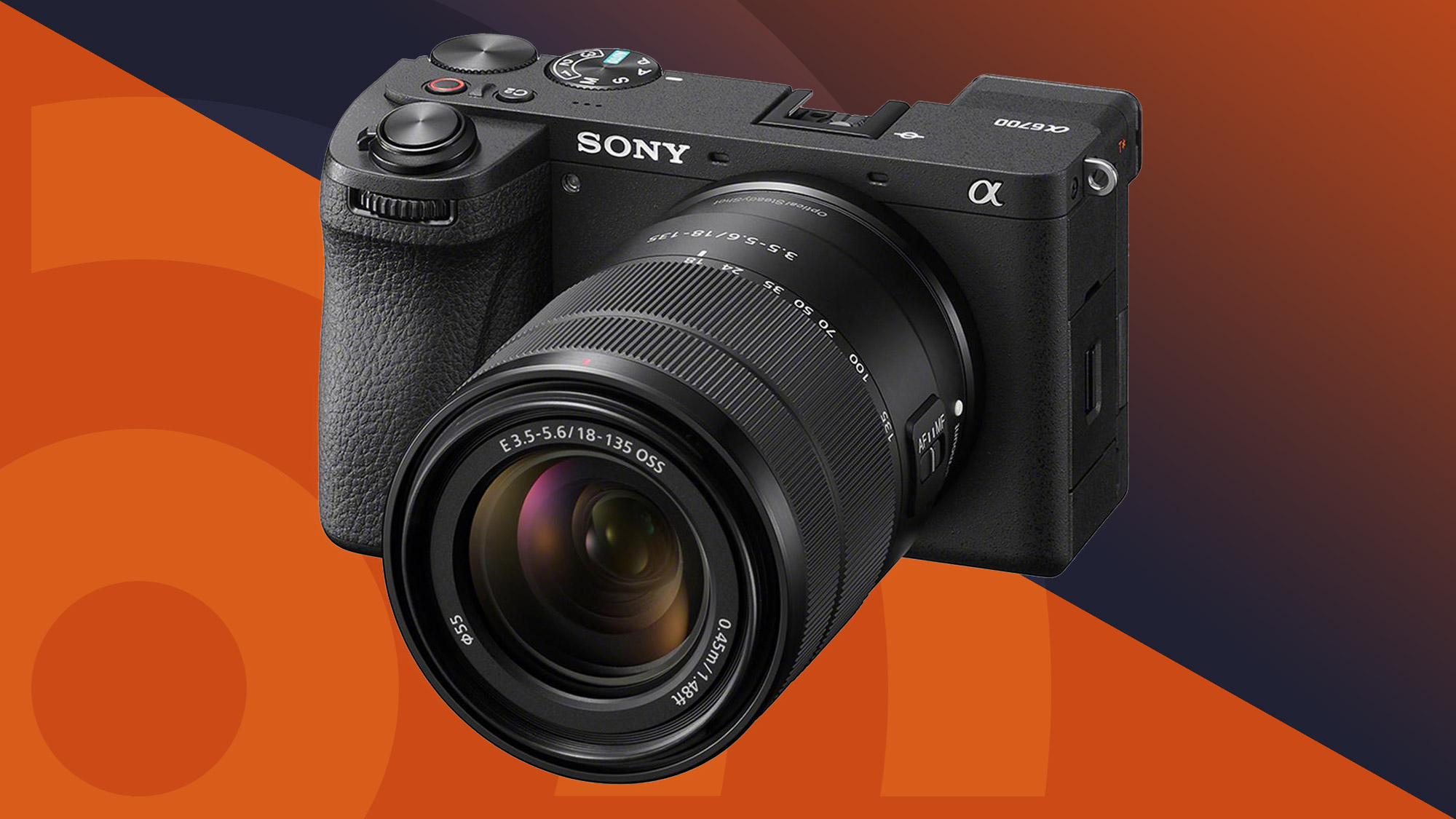Introduction
Getting Started with Your Canon EOS Rebel T5 DSLR Camera
Welcome to the world of photography with the Canon EOS Rebel T5 DSLR camera. Whether you're a novice or an experienced photographer, this versatile and powerful camera opens up a realm of creative possibilities. With its user-friendly interface and impressive features, the Rebel T5 empowers you to capture stunning images with ease.
In this guide, we will explore the essential functions and capabilities of the Canon EOS Rebel T5, along with tips and techniques for maximizing its potential. From understanding the basic camera settings to mastering the art of composition and framing, this comprehensive overview will help you unleash your creativity and elevate your photography skills.
Throughout this journey, we will delve into the intricacies of the 18-55mm and 75-300mm lenses, uncover the nuances of exposure and lighting, and delve into the world of post-processing to refine your captured moments. Whether you're passionate about landscape photography, portraiture, or capturing the vibrant energy of everyday life, the Canon EOS Rebel T5 equips you to bring your vision to life.
Through this guide, you will gain the knowledge and confidence to harness the full potential of your DSLR camera, transforming ordinary scenes into extraordinary works of art. Let's embark on this exciting exploration of photography with the Canon EOS Rebel T5 DSLR camera, where every click of the shutter holds the promise of capturing timeless memories and evocative imagery.
Getting to Know Your Canon EOS Rebel T5 DSLR Camera
Before embarking on your photographic journey with the Canon EOS Rebel T5 DSLR camera, it's essential to familiarize yourself with its physical features and functionalities. The Rebel T5 boasts a compact and ergonomic design, making it comfortable to hold and operate for extended shooting sessions. Its intuitive layout and well-labeled controls ensure seamless navigation through the camera’s settings and options.
The camera’s high-resolution 18-megapixel CMOS sensor delivers exceptional image quality, allowing you to capture intricate details and vibrant colors in your photos. The DIGIC 4 image processor further enhances the camera’s performance, enabling swift processing of images and supporting a wide ISO range for diverse shooting conditions.
Equipped with a bright optical viewfinder, the Rebel T5 provides a traditional yet immersive shooting experience, allowing you to precisely compose your shots and anticipate the final image with clarity. The 3-inch LCD monitor offers a convenient platform for reviewing captured images, navigating the camera’s menu system, and accessing various settings and playback options.
Understanding the camera’s physical components, such as the shutter button, mode dial, and control buttons, is crucial for seamless operation and efficient adjustments while shooting. Additionally, familiarizing yourself with the camera’s ports, including the USB and HDMI connections, ensures convenient file transfer and external display capabilities.
As you delve deeper into the functionalities of the Canon EOS Rebel T5, you’ll discover its versatility in capturing a wide range of subjects, from breathtaking landscapes to dynamic action scenes. The camera’s robust build quality and lightweight construction make it an ideal companion for both outdoor adventures and indoor photo sessions, catering to diverse shooting environments and photographic styles.
By mastering the physical attributes and capabilities of the Canon EOS Rebel T5 DSLR camera, you’ll lay a solid foundation for unleashing your creativity and harnessing the full potential of this remarkable imaging tool. Let’s continue our exploration of this exceptional camera, delving into its lenses, settings, and shooting modes to elevate your photography skills to new heights.
Understanding the 18-55mm and 75-300mm Lenses
One of the key advantages of the Canon EOS Rebel T5 DSLR camera is its compatibility with a range of lenses, offering photographers the flexibility to adapt to various shooting scenarios and achieve diverse creative effects. The 18-55mm and 75-300mm lenses, commonly bundled with the Rebel T5, serve as versatile tools for capturing a wide array of subjects with precision and artistry.
The 18-55mm lens, often referred to as a standard zoom lens, provides a versatile focal length range suitable for everyday photography. From wide-angle compositions that encompass expansive landscapes to medium telephoto shots that highlight subjects with clarity, this lens empowers photographers to explore diverse perspectives and compositions. Its compact form factor and lightweight design make it an ideal choice for casual outings and travel photography, ensuring that you can effortlessly capture the essence of any scene.
On the other hand, the 75-300mm lens offers an extended telephoto reach, enabling photographers to bring distant subjects closer and magnify the details of captivating scenes. This telephoto zoom lens excels in capturing distant wildlife, sports events, and intimate portraits, allowing photographers to isolate subjects and create compelling visual narratives. With its ability to compress perspective and accentuate the depth of a scene, the 75-300mm lens unlocks new creative possibilities, making it an indispensable asset for photographers seeking to expand their artistic horizons.
Understanding the unique characteristics and capabilities of these lenses is essential for leveraging their full potential. The 18-55mm lens excels in capturing a wide range of scenes, from sweeping vistas to intimate portraits, while the 75-300mm lens empowers photographers to explore the nuances of distant subjects and immersive compositions.
By mastering the art of lens selection and adapting to the distinctive traits of each lens, you’ll elevate your photographic storytelling and expand your creative repertoire. As we delve deeper into the functionalities of the Canon EOS Rebel T5 DSLR camera, we’ll explore how these lenses intertwine with the camera’s settings and shooting modes to capture captivating imagery across diverse genres and visual narratives.
Basic Camera Settings and Functions
Mastering the fundamental settings and functions of your Canon EOS Rebel T5 DSLR camera is pivotal in unleashing its full potential and capturing exceptional imagery. The camera’s intuitive interface and comprehensive array of controls empower photographers to customize their shooting experience and adapt to varying lighting conditions and subjects.
Understanding the exposure triangle, comprising aperture, shutter speed, and ISO, forms the cornerstone of achieving well-exposed and visually compelling images. The Rebel T5’s aperture control allows you to adjust the size of the lens opening, influencing the depth of field and controlling the amount of light entering the camera. Pairing this with the camera’s versatile shutter speed settings enables precise control over motion blur and freeze-frame effects, while the adjustable ISO sensitivity expands your capability to shoot in low-light environments without compromising image quality.
The camera’s white balance settings play a crucial role in rendering accurate colors and maintaining the visual integrity of your photographs across different lighting conditions. By selecting the appropriate white balance preset or customizing the color temperature, you can ensure that your images faithfully represent the true hues of the scene, whether you’re shooting under natural daylight, fluorescent lights, or incandescent bulbs.
Exploring the metering modes of the Rebel T5 allows you to fine-tune the camera’s exposure calculations based on the distribution of light within the frame. Whether you opt for evaluative, center-weighted, or spot metering, understanding the nuances of each mode empowers you to achieve balanced exposures and preserve critical highlights and shadow details in your images.
The camera’s autofocus system offers a range of focus modes, including single-shot autofocus, continuous autofocus, and manual focus, enabling precise control over the sharpness and clarity of your subjects. Understanding when to utilize each focus mode, depending on the motion and predictability of your subjects, enhances your ability to capture crisp and well-defined images.
By familiarizing yourself with the basic camera settings and functions of the Canon EOS Rebel T5, you’ll gain the confidence to adapt to diverse shooting scenarios and tailor your photographic approach to suit your creative vision. Let’s delve further into the intricacies of the Rebel T5’s shooting modes and the optimal conditions for their application, unlocking a world of creative possibilities and photographic expression.
Shooting Modes and When to Use Them
The Canon EOS Rebel T5 DSLR camera offers a diverse array of shooting modes, each tailored to specific shooting scenarios and creative intentions. Understanding the nuances of these modes empowers photographers to adapt to varying conditions and subjects, elevating the visual impact and storytelling potential of their images.
The Full Auto mode serves as an ideal starting point for novice photographers, allowing the camera to make automatic adjustments to exposure settings and focus, simplifying the process of capturing well-exposed and sharp images. This mode is particularly useful in situations where quick and spontaneous shooting is paramount, providing a hassle-free approach to photography.
For photographers seeking greater control over specific aspects of their images, the Program (P) mode offers a balance between automatic and manual adjustments. In this mode, you can adjust settings such as ISO, white balance, and exposure compensation while the camera retains control over the aperture and shutter speed, providing a flexible yet user-friendly shooting experience.
The Aperture Priority (Av) mode prioritizes the control of the aperture setting, allowing photographers to dictate the depth of field and influence the background blur, or bokeh, in their images. This mode is particularly advantageous in portrait and macro photography, where isolating the subject from the background enhances visual impact and draws attention to the main focal point.
Conversely, the Shutter Priority (Tv) mode emphasizes precise control over the shutter speed, enabling photographers to freeze fast-moving subjects with a high shutter speed or convey motion blur with a slower shutter speed. This mode is indispensable in sports photography, wildlife photography, and creative long-exposure techniques, offering unparalleled versatility in capturing dynamic scenes.
For photographers seeking complete manual control over exposure settings, the Manual (M) mode provides the freedom to adjust aperture, shutter speed, and ISO according to their creative vision and the specific requirements of the scene. This mode is favored by experienced photographers and professionals who prioritize meticulous control over every aspect of the image-making process.
By comprehending the distinct characteristics and applications of each shooting mode, photographers can confidently tailor their approach to suit the demands of the scene and the nuances of their creative vision. As we continue our exploration of the Canon EOS Rebel T5 DSLR camera, we’ll delve into the intricacies of exposure and the camera’s light meter, unraveling the art of achieving optimal exposure in diverse lighting conditions and photographic scenarios.
Understanding Exposure and Using the Camera’s Light Meter
Exposure forms the essence of photography, defining the interplay of light and shadow to render captivating and well-balanced images. The Canon EOS Rebel T5 DSLR camera’s light meter and exposure controls empower photographers to achieve optimal exposure, preserving the tonal range and detail in their photographs across diverse lighting conditions.
The camera’s light meter measures the intensity of light reflecting off the scene and provides a visual indication of the exposure levels through the viewfinder or the camera’s LCD monitor. As you adjust the camera’s settings, the light meter guides you in achieving the ideal balance of light and shadow, ensuring that your images exhibit the desired tonal range and visual impact.
Understanding the concept of exposure compensation enables photographers to fine-tune the camera’s exposure settings based on the specific requirements of the scene. By adjusting the exposure compensation, you can deliberately overexpose or underexpose the image to convey a particular mood or compensate for challenging lighting conditions, effectively expanding your creative control over the final aesthetic of the photograph.
The camera’s histogram display provides a graphical representation of the tonal distribution within the image, offering valuable insights into the exposure and contrast characteristics of the scene. By interpreting the histogram, photographers can assess the distribution of highlights, shadows, and mid-tones, enabling informed decisions regarding exposure adjustments and ensuring the preservation of critical image details.
Engaging the camera’s exposure lock function allows photographers to maintain a specific exposure setting, even when recomposing the frame or capturing a sequence of images with consistent exposure values. This feature is particularly beneficial in situations where the lighting conditions remain constant, yet the composition or framing necessitates adjustments without altering the exposure parameters.
As you navigate through diverse shooting environments and lighting scenarios, the Canon EOS Rebel T5’s exposure controls and light meter serve as invaluable tools for achieving technically precise and visually compelling imagery. By comprehending the interplay of exposure settings, light meter readings, and the visual feedback provided by the camera, photographers can confidently adapt to dynamic lighting conditions and convey their creative vision with finesse.
As we delve deeper into the intricacies of the Rebel T5’s functionalities, we’ll explore the nuances of autofocus and manual focus, unraveling the art of achieving sharp and well-defined subjects across varied photographic scenarios and genres.
Using Autofocus and Manual Focus
The Canon EOS Rebel T5 DSLR camera offers a versatile and responsive focusing system, empowering photographers to achieve precise and sharp focus in diverse shooting scenarios. Understanding the nuances of autofocus and manual focus modes equips photographers with the flexibility to adapt to varying subjects and compositions, ensuring that every image captures the intended visual narrative with clarity and precision.
The camera’s autofocus (AF) system utilizes a selection of focus points distributed across the frame, allowing photographers to designate the desired point of focus within the scene. Whether capturing moving subjects or composing static scenes, the Rebel T5’s autofocus system offers a range of modes, including single-point AF, zone AF, and automatic selection AF, catering to the demands of different subjects and the photographer’s creative intent.
Engaging the camera’s AI Servo AF mode facilitates continuous autofocus tracking, ideal for capturing dynamic subjects in motion, such as athletes, wildlife, or bustling street scenes. This mode ensures that the camera maintains sharp focus on the subject, even as it moves within the frame, providing photographers with the confidence to capture decisive moments with clarity and precision.
Conversely, the One-Shot AF mode suits stationary subjects and deliberate compositions, allowing photographers to achieve precise focus on a specific point before capturing the image. This mode is well-suited for portraiture, still life, and controlled environments where meticulous attention to detail and selective focus are paramount.
For photographers seeking complete control over the focusing process, the Rebel T5’s manual focus mode offers a tactile and immersive approach to achieving sharpness and clarity. By manually adjusting the focus ring on the lens, photographers can fine-tune the focus to suit their creative vision, ensuring that the intended subject or point of interest is rendered with precision and visual impact.
Understanding the interplay between autofocus and manual focus modes enables photographers to adapt to the demands of the scene and the nuances of their subjects, ensuring that every image conveys the intended narrative with sharpness and clarity. As we delve deeper into the art of composition and framing, we’ll explore techniques for harnessing the Rebel T5’s focusing capabilities to elevate the visual impact and storytelling potential of your photographs.
Composition and Framing Tips
Mastering the art of composition and framing is pivotal in creating visually compelling and impactful photographs with the Canon EOS Rebel T5 DSLR camera. By understanding the principles of composition and exploring creative framing techniques, photographers can infuse their images with narrative depth, visual harmony, and evocative storytelling.
The rule of thirds serves as a foundational principle in composition, guiding photographers to position key elements or points of interest along intersecting lines or at their junctions, thereby creating a balanced and visually engaging composition. By adhering to this guideline, photographers can instill a sense of dynamism and visual flow within their images, drawing the viewer’s gaze toward the focal points with intention and purpose.
Exploring the concept of leading lines empowers photographers to utilize natural or man-made lines within the scene to guide the viewer’s eye toward the main subject or key elements of the composition. Whether leveraging converging lines in architectural photography or meandering pathways in landscape scenes, incorporating leading lines adds depth and narrative direction to the image, enhancing its visual impact and storytelling potential.
Understanding the interplay of positive and negative space within the frame allows photographers to balance the visual elements and create a sense of harmony and tension. By judiciously managing the distribution of positive subjects and the surrounding negative space, photographers can evoke a mood, convey a narrative, and imbue their images with a compelling visual rhythm that captivates the viewer’s imagination.
The use of framing, whether natural elements like archways and foliage or intentional compositional devices, adds depth and context to the main subject, creating layers of visual interest and guiding the viewer’s attention. By framing the subject within the scene, photographers can establish a sense of context and narrative, drawing the viewer into the image and creating a visually immersive experience.
Exploring the impact of perspective and viewpoint empowers photographers to convey a unique visual narrative by experimenting with different angles, vantage points, and perspectives. By altering the viewpoint and exploring unconventional perspectives, photographers can infuse their images with a fresh and distinctive visual language, offering the viewer a unique and captivating interpretation of the scene.
By incorporating these composition and framing tips into their photographic practice, photographers can elevate the visual impact and storytelling potential of their images, transforming everyday scenes into compelling visual narratives. As we progress in our exploration of the Canon EOS Rebel T5 DSLR camera, we’ll delve into techniques for capturing stunning imagery in diverse lighting conditions and environments, further enhancing the depth and versatility of your photographic repertoire.
Tips for Shooting in Different Lighting Conditions
Photography is inherently intertwined with light, and mastering the art of capturing compelling images in diverse lighting conditions is essential for photographers seeking to unleash the full potential of the Canon EOS Rebel T5 DSLR camera. By understanding the nuances of different lighting scenarios and employing strategic techniques, photographers can harness the interplay of light and shadow to create evocative and visually captivating imagery.
Golden Hour Magic: Embrace the soft, warm glow of the golden hour, occurring during the first and last hours of daylight, to infuse your images with a captivating and ethereal ambiance. The gentle, directional light during this time enhances textures, creates long, dramatic shadows, and imbues the scene with a magical quality, making it an ideal setting for landscape, portrait, and nature photography.
Embracing Overcast Skies: Overcast or cloudy skies offer a diffused and even light that minimizes harsh shadows, making it conducive to capturing portraits and macro photography. Embrace the soft, ambient light to render subtle details and convey a sense of tranquility and intimacy in your images, allowing the subject to shine without the distraction of strong contrasts.
Mastering Low-Light Environments: In challenging low-light conditions, such as indoor settings or twilight scenes, leverage the Rebel T5’s adjustable ISO sensitivity and wide aperture settings to capture compelling images without compromising image quality. Embrace the interplay of light and shadow to create moody and atmospheric compositions, infusing your images with a sense of drama and intrigue.
Dynamic Lighting Scenarios: When faced with dynamic lighting scenarios, such as high-contrast scenes or dappled light filtering through foliage, employ techniques such as exposure bracketing or HDR (High Dynamic Range) imaging to capture the full tonal range of the scene. By blending multiple exposures, you can preserve details in both the highlights and shadows, ensuring a well-balanced and visually captivating final image.
Artificial and Mixed Lighting: When working with artificial or mixed lighting, such as indoor environments or urban nightscapes, adapt the white balance settings of the Rebel T5 to accurately render the colors and ambiance of the scene. Customizing the white balance ensures that the warmth of incandescent lighting or the cool tones of fluorescent lights are faithfully represented, maintaining the visual integrity and mood of the image.
By embracing these tips for shooting in different lighting conditions, photographers can adapt to the nuances of light and shadow, infusing their images with depth, mood, and visual intrigue. As we continue our exploration of the Canon EOS Rebel T5 DSLR camera, we’ll delve into the art of editing and post-processing, unlocking the potential to refine and elevate your captured moments into timeless works of visual art.
Editing and Post-Processing Your Photos
Once you’ve captured a compelling image with your Canon EOS Rebel T5 DSLR camera, the process of editing and post-processing allows you to refine and elevate your photographs, transforming them into visually stunning works of art. Whether you’re aiming to enhance the colors, fine-tune the exposure, or unleash your creative vision, the post-processing stage offers a wealth of opportunities to imbue your images with depth, emotion, and visual impact.
Color Correction and Enhancement: Utilize post-processing software to adjust the color balance, saturation, and vibrancy of your images, ensuring that the hues accurately represent the mood and ambiance of the scene. By fine-tuning the colors, you can evoke a specific emotional response and convey the intended narrative with precision and visual allure.
Exposure and Contrast Refinement: Fine-tune the exposure and contrast of your images to ensure a well-balanced tonal range and optimal visual impact. Adjusting the highlights, shadows, and mid-tones allows you to preserve critical details and create a compelling interplay of light and shadow, enhancing the depth and three-dimensionality of the image.
Sharpening and Detail Enhancement: Leverage the capabilities of post-processing software to enhance the sharpness and clarity of your photographs, ensuring that intricate details and textures are rendered with precision and visual allure. By selectively sharpening key elements within the image, you can draw the viewer’s gaze to specific points of interest and create a captivating visual journey.
Creative Effects and Artistic Interpretation: Embrace the creative potential of post-processing to apply artistic filters, add vignettes, or experiment with black and white conversions, infusing your images with a distinctive visual language and evocative storytelling. By exploring creative effects, you can imbue your photographs with a unique and compelling aesthetic that resonates with your creative vision.
Composition Refinement and Cropping: Fine-tune the composition of your images through selective cropping and framing adjustments, ensuring that the visual elements are harmoniously balanced and the narrative is conveyed with clarity and intention. By refining the composition in post-processing, you can elevate the visual impact and storytelling potential of your photographs.
By embracing the art of editing and post-processing, photographers can unleash the full potential of their captured moments, refining them into timeless works of visual art that resonate with depth, emotion, and evocative storytelling. As you embark on this creative journey with your Canon EOS Rebel T5 DSLR camera, the post-processing stage becomes a canvas for expressing your unique perspective and infusing your images with enduring visual allure.







